Time Signatures For Beginner Guitar Players: How To Improve Rhythm
Author: Brett Heenan
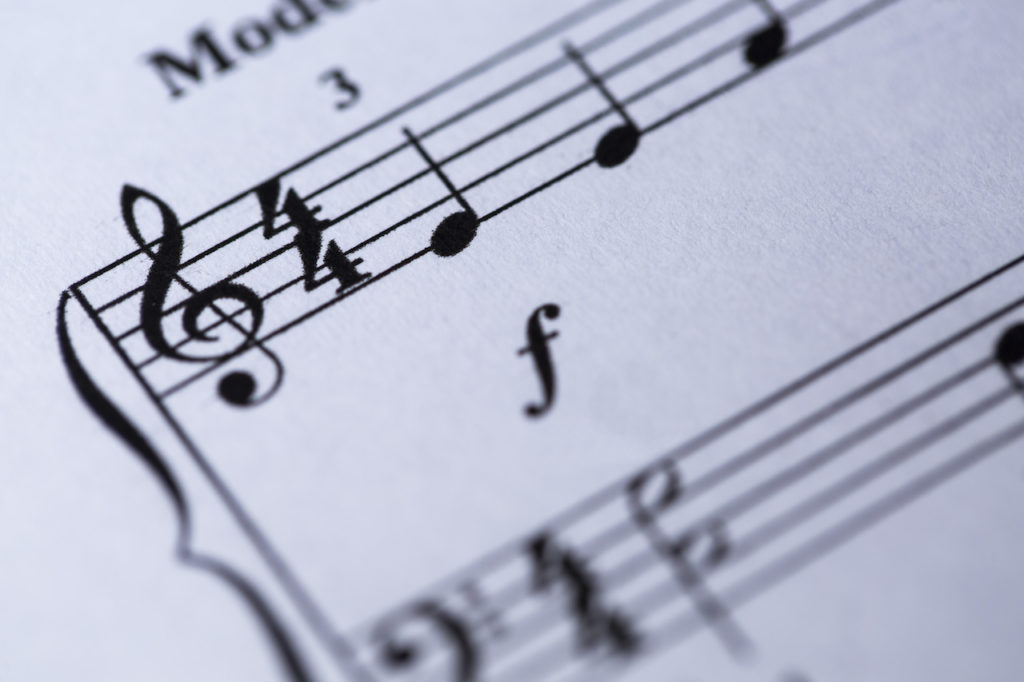
One of the first questions that comes up when starting to read music is often, “what are those numbers at the beginning of the bar?”
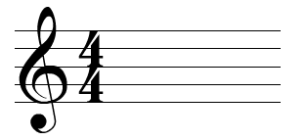
These are referred to as time signatures. They come after the clef and key signature at the beginning of a score. Sometimes there may be mid-score time changes and those will be indicated by a time signature figure following a barline. Although they look a little perplexing, once you’ve picked them apart, time signatures are quite easy to understand.
The first and slightly easier number we’ll discuss is the one on the top of the time signature. This indicates how many beats will be in the measure. If the case of the common 4/4 time, the measure will receive 4 beats, in 3/4 time it’s 3 beats, in 12/8 the measure contains 12 beats. This invariably begs the question what type of beat? This is where things can become slightly more difficult to understand.
(video source: wikipedia)
Understanding Time Signatures

– The number on the bottom of the time signature denotes the type and duration that each beat receives in the measure.
– The number on the bottom indicates the type of note that fits into a whole note evenly.
For instance, the number 4 on the bottom indicates that a quarter note receives the beat because a whole note divided by 4 equals 4 quarter notes. When a time signature has an 8 on the bottom, in 6/8 for instance, the type of note on the bottom is an 8th note because a whole note divided by 8 gives you 8 eighth notes. In 3/2 time, each beat has a duration of a half note because because a whole note divided by 2 equals 2 half notes.
I’m sure you can see a pattern emerging here. Here are some examples of different time signatures. Try to count the beats in each measure and see how the correspond to the time signature.
Example of 3/4:
Example of 6/8:
Example of 5/4:
Example of 4/4:
In the last example which represents 4/4 you see 4 quarter notes in the first measure. Without even looking at the time signature you know this is 4/4 time because there are 4 notes and each of those notes has a quarter note value.
If you look at the second measure, it’s comprised of what looks like six notes. What’s important to recognize here is that the type and duration of each note differs. The first two notes are actually two eighth notes. Added together they represent a quarter note. The second note is a quarter note followed again by two eighth notes and another quarter note. Added together they still represent 4 quarter notes.
In the last measure of the example, the first beat is split up into 4 notes. A quarter note divided by 4 gives you four sixteenth notes. The the second beat is divided into two eighth notes and the last beat is a half note which has a duration of two quarter notes. Although there are what looks to be 7 notes in the last measure, their duration and value still add up to 4 quarter notes.
The same can be said of 3/4. 3/4 lends itself to a lulling feeling and is the time signature often heard in waltzes. If you look at the example above and examine each note duration you’ll find that the sum of each measure is still equal to 3 quarter notes. In 5/4 it’s five quarter notes. In 6/8 you’ll notice that the note duration sums up to 6 eighth notes.
You’ll always see a number on the bottom of a time signature that will fit evenly into a whole note. The number on top, however, will sometimes be an odd number and this is where more complex time signatures begin to emerge.
Simple, Compound & Complex Time Signatures
Simple time signatures refer to 2/2, 2/4, 3/4, and 4/4. These are often called duple, triple, and quadruple time. The numbers on top represent those which are even or are the smallest divisible number of itself (in the case of 3).
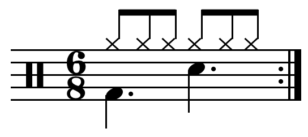
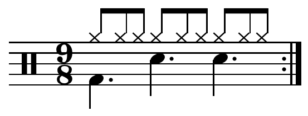
With compound time signatures, the numbers on top are most often those that are divisible by 3. For instance 6/8, 9/8, 12/8. If you think about 6/8 it can actually be divided into 3/4. Of course the bottom notes durational representation of a beat is different, but without looking you could play two measures of 3/4 at twice the speed of a measure of 6/8 and not necessarily hear the difference. 9/8 and 12/8 represent measures that contain 9 eighth notes or 12 eight notes respectively. These too could be divided down into 3/4.
Complex time signatures are those that don’t fit into the simple or compound time signature format. That is, they don’t represent the more common double, triple, or quadruple time signatures. Examples of these would be 5/4, 5/8, 7/8, 11/8. These still follow the rules I’ve mentioned from the beginning, they just promote a more complex structure. 5/4 for instance represents a measure that contains 5 notes with each beat representing a quarter note. 5/8 represents measures the have 5 notes with each beat receiving a duration of an eighth note. If you’ve heard the Mission Impossible theme song, you’ve heard a representation of a 5/4 time signature.
Below is an example of 5/4 with different subdivisions or groupings for each beat. In the end the representation is still 5 quarter notes per measure.
If you’re ever having difficulty finding the time signature of a given song just remember to try to listen for the main pulse that you feel. Does it feel like it’s lulling, or a waltz? Chances are it’s 3/4 or 6/8. Does it feel a little extended or awkward? It could be some complex time signature like 5/8 or 7/8. Try to count the beats and fit the smallest representation into a measure. This will help you break down the possibilities. Often times I’ll start by counting 4. If that doesn’t feel right then I’ll count 3. If that still feels awkward try 5 or 7. I’ll often find that something is in 11/8 when I’ve counted what feels like a measure of 6 and a measure of 5 put together. These little details will help you decipher any time signature you come across.
Though time signatures may sometimes look a little intimidating, they really follow some simple rules. Just always remember that the number on top represents who many beats are in the measure and the bottom number represents the value or duration that each beat gets. Hopefully this bit of information will help you next time you’re trying to find out the time signature of a perplexing song. Happy playing!



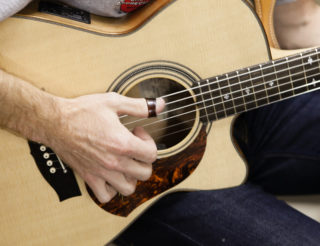
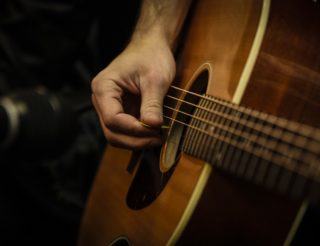
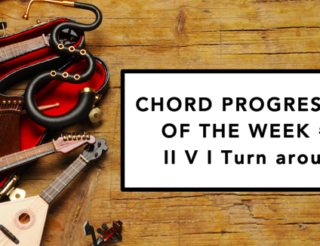


No comments yet - be the first.